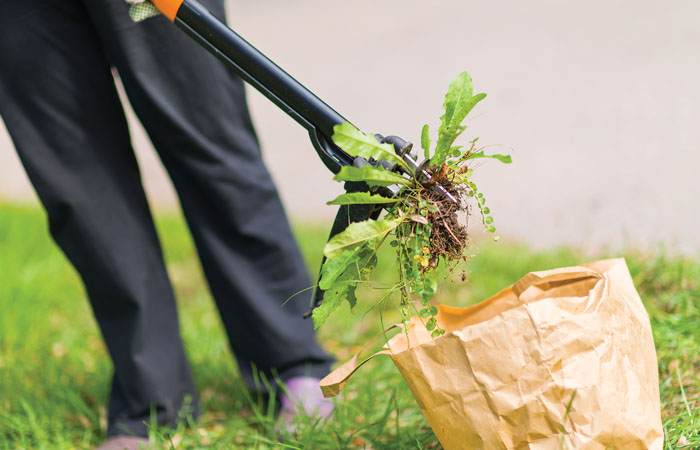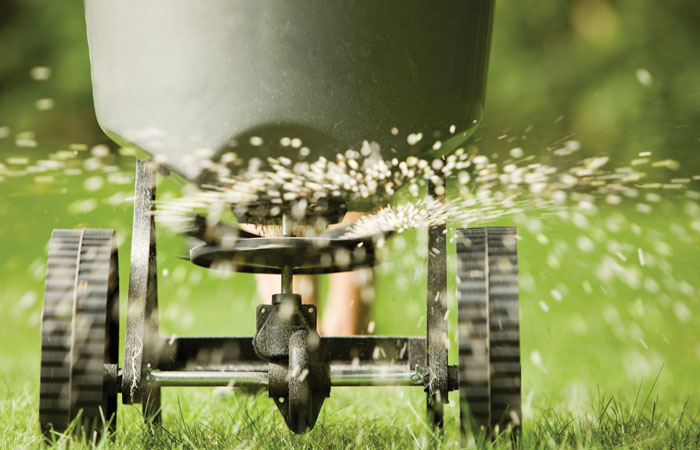Welcome avid golfers/gardeners to May 2022. It has been a tough couple of years for plants and gardens in North Texas. We are still feeling the impacts of a record winter storm in 2021 and January and February 2022 gave us several rounds of snow/ice and low temperatures in the teens. This has caused some major damage to landscape across the area and while normally we cover more floricultural based questions this time of year this month we will take a broader approach and answer the question most asked lately around the club, how can I improve my landscape this summer?
Plant and Hardscapes Inventory (what type and how many)
The first step you should take to improve your landscape this summer is to conduct an in-depth inventory of your landscape assets. This includes everything from trees, shrubs and flowers to hardscapes (sidewalks, driveways and fences) irrigation assets are also included in a hardscapes inventory. You can do this evaluation/inventory yourself or you can hire a local horticultural or construction expert but it is vital to success that this process be accurately performed. Start by creating or updating an inventory of plants. Identify the plant (common and scientific name) if you need help with identification you can use phone apps or books if you’re old school. Phone Apps are certainly faster. My favorite plant identification phone apps are PlantNet for general shrubs and most plants which is a user generated information site. For tree Identification I prefer LeafSnap – it is as simple as taking a picture to get the ID, no more wondering if you have a maple or an oak tree. For flowers and such I like PlantSnap which also works with photos but includes more annual and perennial flowers in its data base. You should create a document that has all of your plants identified and quantified. Another pro tip is to take lots of pictures. Document how many of each type plant is present and for large plantings such as boxwoods or yaupons you can simply record the square footage of the mass planting. You should also record whether mulch (type and depth) is present for example, 3” of cypress mulch around all of the trees (3) in the front yard and 2” of pea gravel mulch 4’ x 30’ securing the front shrubbery (yaupon hollies) from the foundation to the brick in ground edging. These logistics are very valuable should you need to get a cost estimate or replace your plant assets. Beyond your plants it is also important to capture your hardscapes accurately within your inventory. This includes things such as driveways, sidewalks, patios and rocks or stonework. They all should be included in your inventory by type and area covered as these features are all part of your landscape assets.

Plant and Hardscapes Evaluation (Condition)
Once you have determined what you have in regards to plant and hardscapes inventory it is also a good idea to begin to track the condition of these assets. This should be a living or progressive document that tracks the aging and changes within the landscape assets. The simplest way to track plant health is to evaluate each plant for overall health by noting pests, structure or form, rooting, leaf color/vigor and any other signs of health or weakness. Corrective actions for things like pests (aphids, ants etc.) and drainage should be implemented in a timely manner and noted in your evaluation notes. I usually rate each plant or grouping of plants with a plant health rating between one and ten, one being poor health and ten being perfectly healthy. Be sure to look for discolored leaves, physical damage, root issues, active pests etc. You may also consider assigning a species value factor so that a Japanese Maple specimen may be a nine in species value compared to a Sweet Gum rated at a three for species value. You as the land owner are the sole voice in species value. Species value plus the health rating divided by two will give you a better value of a plants importance in your landscape. So a species value of eight plus a health rating of six equals fourteen divided by two generates an overall plant value of seven. Use the same method year over year and the data generated will provide a snapshot of the ebb and flow of your landscape. So keep good notes on why you gave a rating such as cold damage on a ligustrum planting in Spring of 2021. Your hardscapes should also be tracked for condition and again a one to ten rating system works well. Irrigation assets should be evaluated for leaks and coverage (sprinkler head adjustments) as well as the dependability of any clocks or watering animation technology. Structural items will require notes on the reason for dropping your hardscape condition rating in each entry such as dropping a fence rating down two points because it needs painting or is dropping the fence rating all the way to one needed because of broken posts or gates. Be as detailed as possible. Know that North Texas is famous for soil movement causing cracks or heaving in sidewalks and drive ways so this should also be tracked and any repairs noted. This is very helpful historical data should you ever decide to sell your home. The key is to be consistent in what you are tracking and how you are tracking it.
April Showers Bring May Flowers and Add Value to Your Landscape
Most avid gardeners do their homework (inventories, evaluations, log entries) because they love the garden results and flowers are often the stars of the show, so I wanted to include a little flower power to celebrate the month of May. In May we are planting warm season annuals and perennial flowers that need warmer temperatures to survive. Warm season annuals germinate, grow and die in one season and will not regrow the following season where as warm season perennials grow in the warm season and then die back in the Winter and regrow again the following Spring. It is also popular to mix annual and perennial flowers together to accent the ornamental aesthetics of each especially in high visibility areas. Examples of warm season annuals include vinca, begonia and coleus. Examples of warm season perennials include daylilies, hosta and liriope.
You should also verify the amount of sunlight your flower bed gets as most flowers require different amounts of sunlight to thrive. The Sunseeker phone app is a great tool for this task and as a general rule flowers are divided into four groups as related to light requirements. They are Shade (less than one hour of sun), Part-Shade (two to four hours of sun or filtered sun), Part Sun (five to seven hours of sun), and Full Sun (more than eight hours of sun). Finding the exact match for the light requirements of a plant is often a trial and error exercise but these are good starting points.
Once planted make sure that you water your flowers/plants properly (note the irrigation inspection and evaluation mentioned earlier). Know the water needs of the plants you cultivate. Remember that cacti use less water than begonias and full sun plants use more water than shade plants. There are inexpensive moisture meters that can tell you when to water but the old school tip is if you can hold the soil in your hand then squeeze it into a ball and the soil hold its shape it’s OK but if the particles feel dry and fall apart water is needed. If you see the plant wilting or showing loss of color water is needed. Try to keep a consistent watering schedule such as watering to field capacity (this is the maximum amount of water that a soil can hold without puddling every two to three rainless days. Do not overwater! Many well-meaning novice gardeners kill their plants with kindness by overwatering. There are more scientific ways to water such as calculating evapotranspiration but for the home owner watching the weather and checking the plant’s general health regularly will work just fine which is the point of this month’s article. The regular appearance of an attentive gardener’s shadow can solve most plant problems.

Our Favorite North Texas Summer Flowers/Plants
Here are some of our favorite North Texas Summer Flowers/Plants. For Annuals in Full Sun try Dusty Miller, Lantana, Marigold, Vinca and Zinnia. For Perennials in Full Sun try Day Lilies, Flax Lilies, Lavender, Russian Sage and Purple Heart. For Annuals in Part Sun try Begonia (Dragon Wing), Coleus, Petunia, Potato Vine, Verbena. For Perennials in Shade try Ajuga, Dracaena and Hosta. For Annuals in Shade try Caladiums, Impatiens (New Guinea), Purslane and Wandering Jew. For Ornamental Grasses in Sun to Part Sun try Muhly Grass, Pampas Grass and Purple Fountain Grass. There are many cultivars of these flowers/plants to choose from and they are available at your local nursery or garden center. I hope you win yard of the month but remember to take time to play lots of golf as the days get longer and continue reading Avidgolfer magazine.